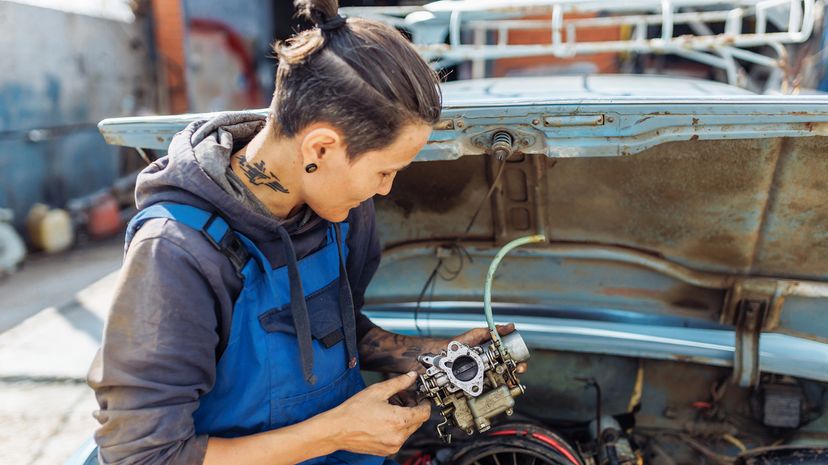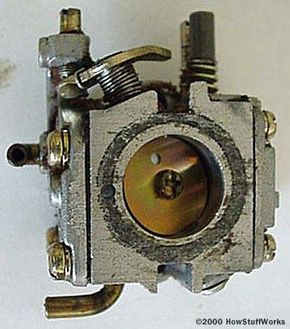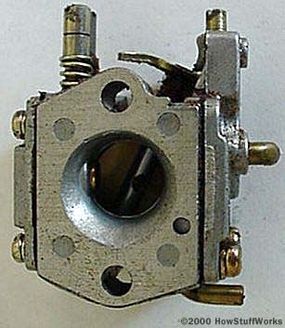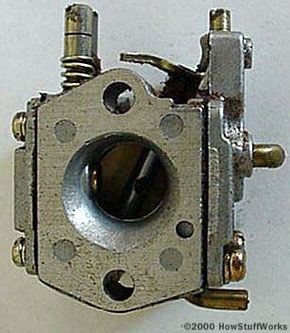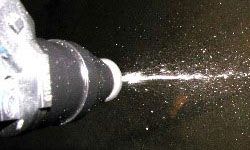The carb is operating "normally" at full throttle. In this case the throttle plate is parallel to the length of the tube, allowing maximum air to flow through the carb. The air flow creates a vacuum in the venturi, and this vacuum draws in a metered amount of fuel through the jet.
Hi and Lo Screws
You can see a pair of screws on the right top of the carb in photo 1. One of these screws (labeled "Hi" in the case of the chain saw) controls how much fuel flows into the venturi at full throttle.
When the engine is idling, the throttle plate is nearly closed (the position of the throttle plate in the photos is the idle position). There is not really enough air flowing through the venturi to create a vacuum.
However, on the back side of the throttle plate there is a lot of vacuum (because the throttle plate is restricting the airflow).
Idle Jet
If a tiny hole is drilled into the side of the carb's tube just behind the throttle plate, more fuel can be drawn into the tube by the throttle vacuum. This tiny hole is called the idle jet. The other screw of the pair seen in photo 1 is labeled "Lo" and it controls the amount of fuel that flows through the idle jet.
Both the Hi and Lo screws are simply needle valves. By turning them you allow more or less fuel to flow past the needle. When you adjust them you are directly controlling how much fuel flows through the idle jet and the main jet.
Choke Plate
When the engine is cold and you try to start it with the pull cord, the engine is running at an extremely low RPM. It is also cold, so it needs a very rich mixture to start. This is where the choke plate comes in.
When activated, the choke plate completely covers the venturi. If the throttle is wide open and the venturi is covered, the engine's vacuum draws a lot of fuel through the main jet and the idle jet (since the end of the carb's tube is completely covered, all of the engine's vacuum goes into pulling fuel through the jets).
Usually this very rich mixture will allow the engine to fire once or twice, or to run very slowly. If you then open the choke plate the engine will start running normally.
